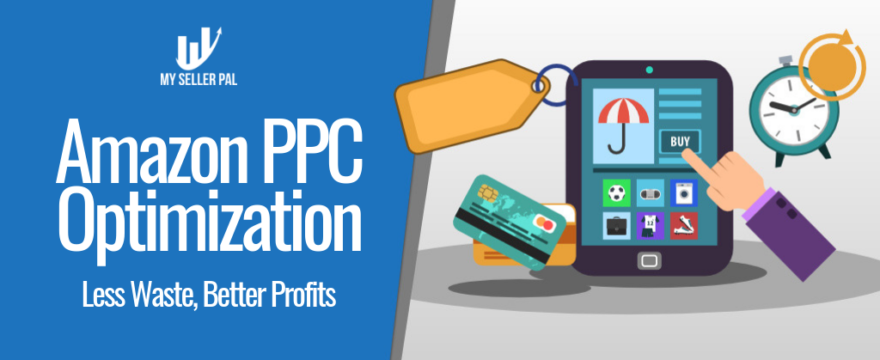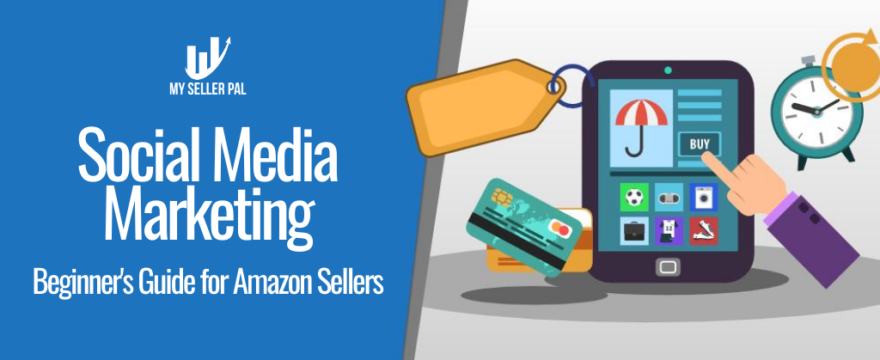Did you ever feel like your not getting enough sales from Amazon PPC?
Every Amazon Seller wants more sales.
After all, that’s the goal of selling on Amazon right?
The problem is, it can be hard to optimize Amazon Sponsored campaigns unless you know exactly how to do it.
Getting to the data and filtering keywords in the past was very time consuming, so don’t beat yourself up for not “doing it right.”
I’m going to show you how to consistently (and automatically) tweak your Amazon Sponsored Products campaigns to get more sales at a lower cost per sale.
No more guesswork.
Just an easy process that gets results.
Note: 2018 Update – We havea new PPC Waste feature that we’re documenting still, but it is helping sellers like Fred save a fortune on Amazon Sponsoredd Products
Let get to it!
Get Your Keyword Data So You Can Optimize It
In order to get your Amazon Sponsored Products keyword data you can either download your “search term report” in Seller Central or use a tool like our My Seller Pal to automate the import of this data.
This data shows you the actual customer search queries (not just your keywords).
I am going to show you how it’s done with My Seller Pal, but you can apply the strategies below to Excel as well.
On My Seller Pal you simply click once and connect your Amazon Sponsored Products account.

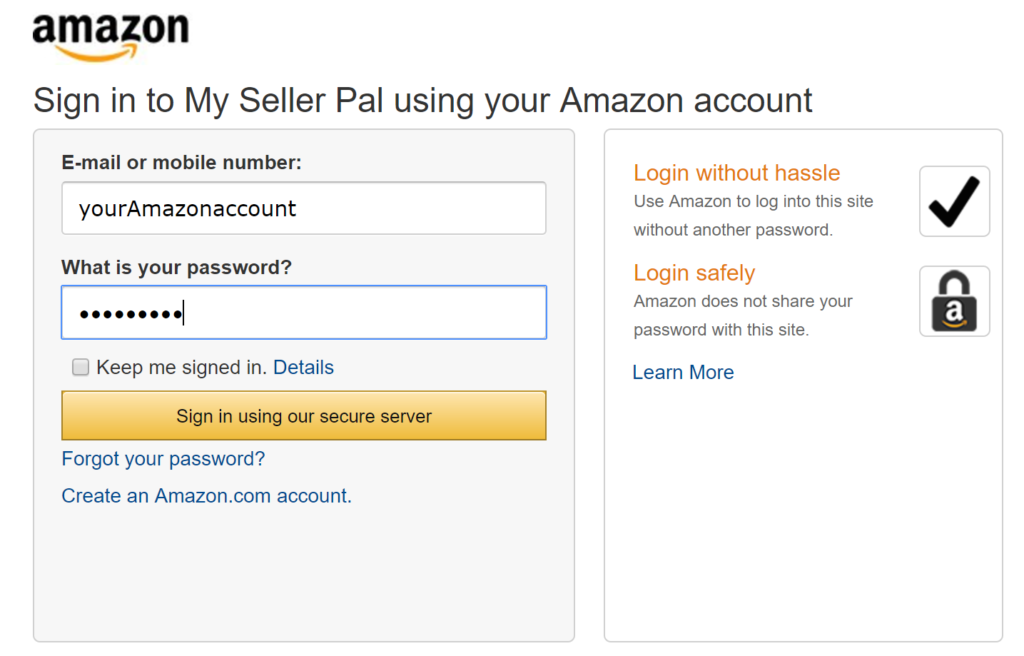
Once connected your keyword data will be pulled into My Seller Pal and automatically updated every hour.
How to Dissect Your Amazon Sponsored Products Keyword Data
In My Seller Pal we breakdown you Sponsored Products keyword data by parent ASIN.
If you’re using excel you can pivot by child ASIN but not parent ASIN.
In My Seller Pal choose your parent product / ASIN.

Keyword Optimizer for Amazon Sponsored Products
My Seller Pal gives you a “Jungle Scout” like interface for filtering your keywords.
Don’t worry! It may look intimidating at first, but below I will give you turn key ideas and filters to find ways to optimize your PPC.
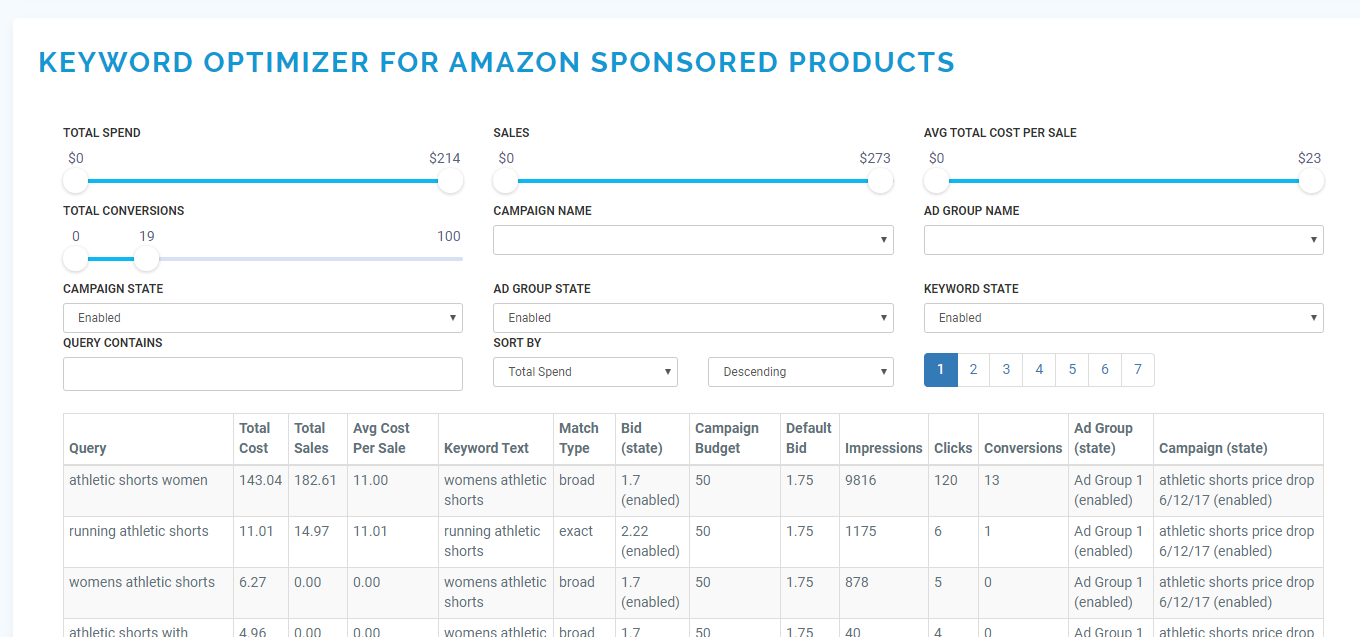
Strategy 1: Find Keywords Making No Sales (That Cost You The Most) – Add As Negative Keywords
One of the most effective ways to optimize your keywords is: find the ones that make no sales!
In this example, I set the filter for Sales to $0-$0, meaning I made no sales.
I set the “total spend” filter minimum to $1, meaning I spent money on ads.
This shows me all queries that cost me money but made no sales.
I sort by “Total Spend”, “Descending” so that I see the queries that are costing me the most (that made no sales).
In here I can see “dri fit” and “breathable” are two keywords that don’t make sense for my product.
I will add these as negative keywords in Amazon.
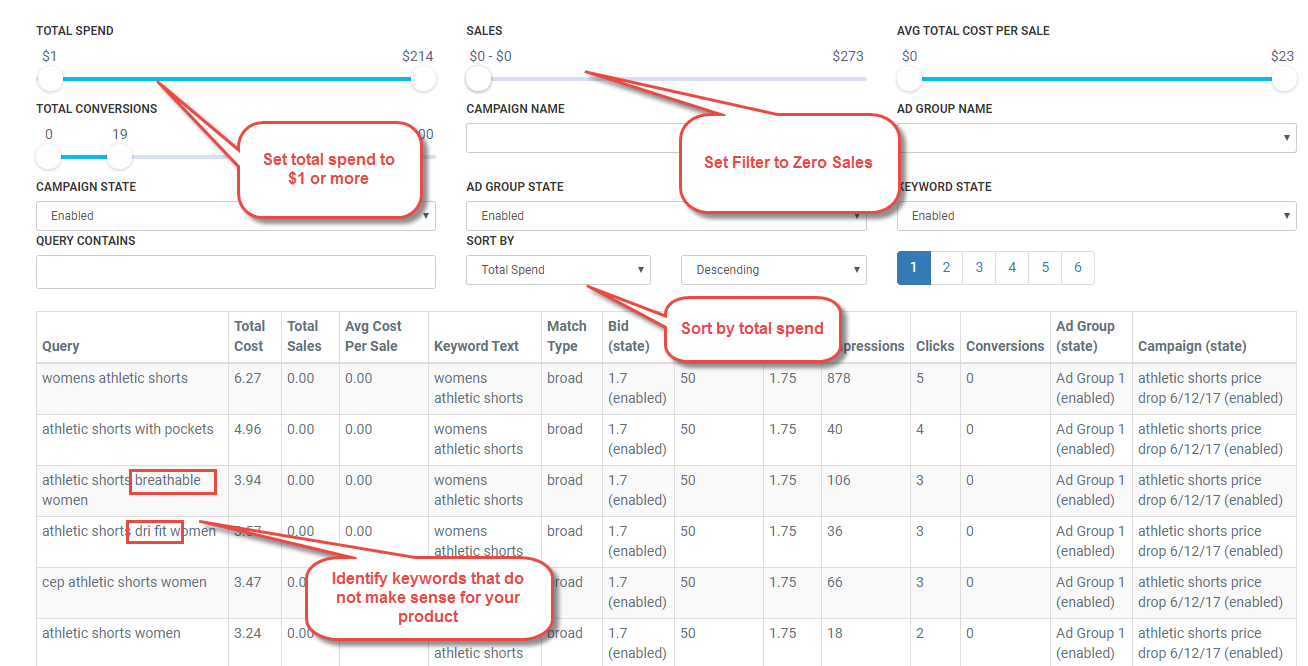
In Amazon I add these as negative keywords with a match type “negative phrase”, since these words don’t make sense for me in anyway for this product.
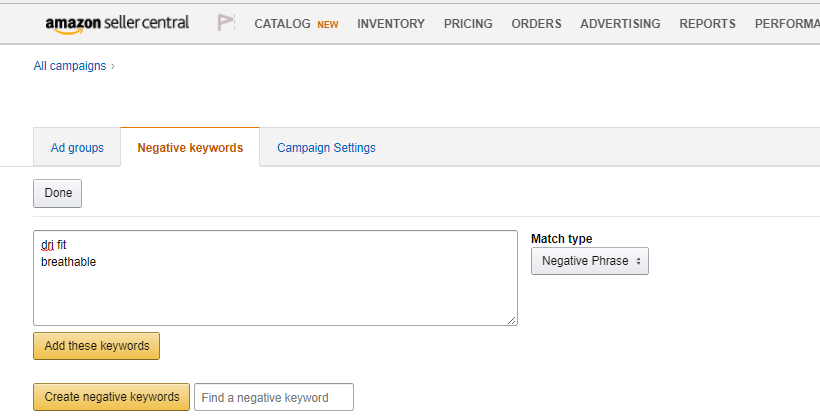
Strategy 2: Find Keywords Giving Lowest Cost Per Sale – Add to Manual Campaigns or Increase Budgets
The goal here is to find keywords making you sales at the lowest cost per sale. If you don’t have a manual campaign for these yet, you can create one. If you do have a manual campaign you can increase your spend.
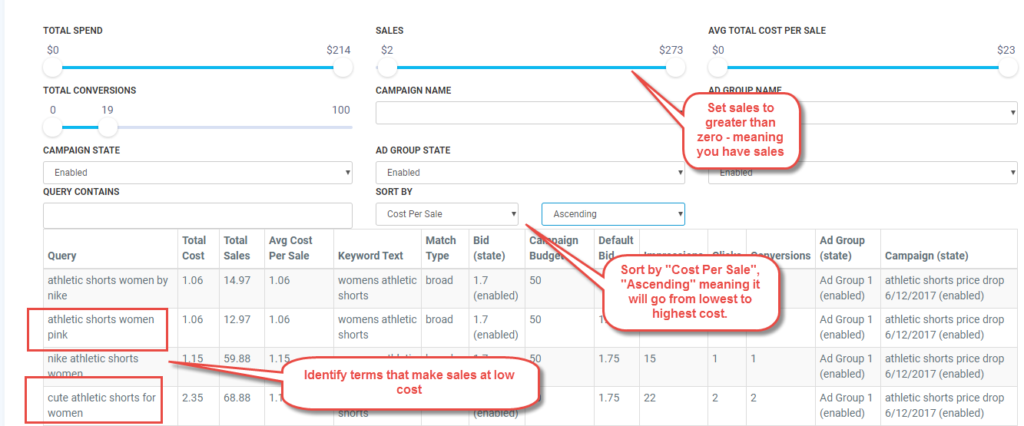
Within Amazon you would take these terms and create new campaigns or increase budgets.
Strategy 3: Find Keywords With The Most Sales – Set Budget Strategically
The next strategy is to find keywords making the most sales.
Now this is where some art comes into play.
If some of these keywords are making a lot of sales but your cost per sale is high….you’ll have to ask yourself:
Is it worth taking a loss on these keywords in order to get more organic ranking?
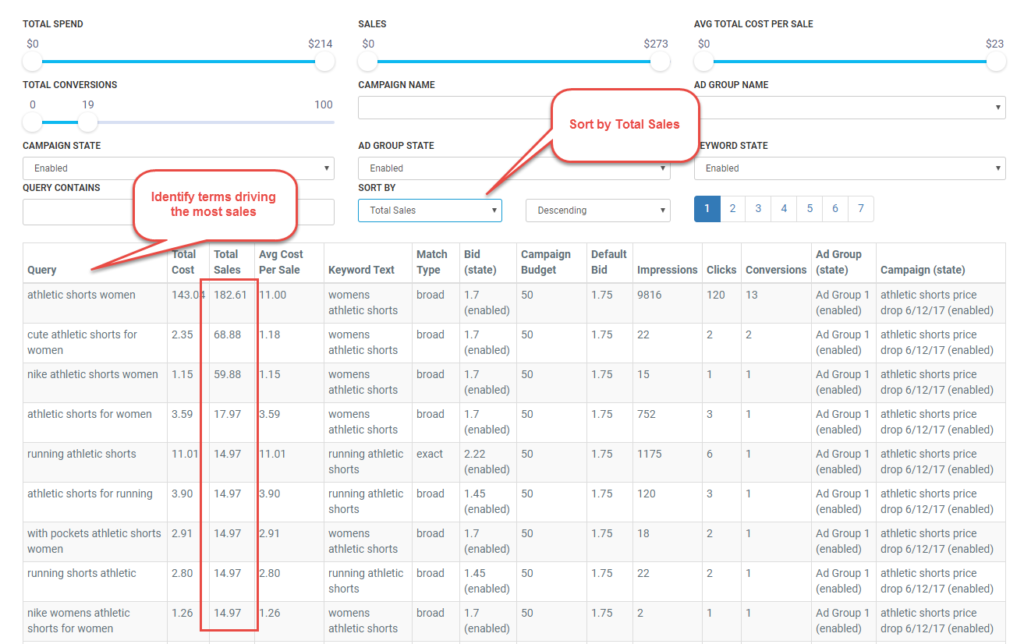
From there you will have much better insights into what is working for your product.
Automate Keyword Insights
If you do all of the above in Excel it would be a great start.
A better approach is to use My Seller Pal to automatically pull this data every hour (so you’re more likely to actually take action and do it more often).
We also send automated emails with reports based on all three strategies above straight to your inbox.
This will help you stay on top of things in the busy life of an entrepreneur.
No need to even log in after this setup.
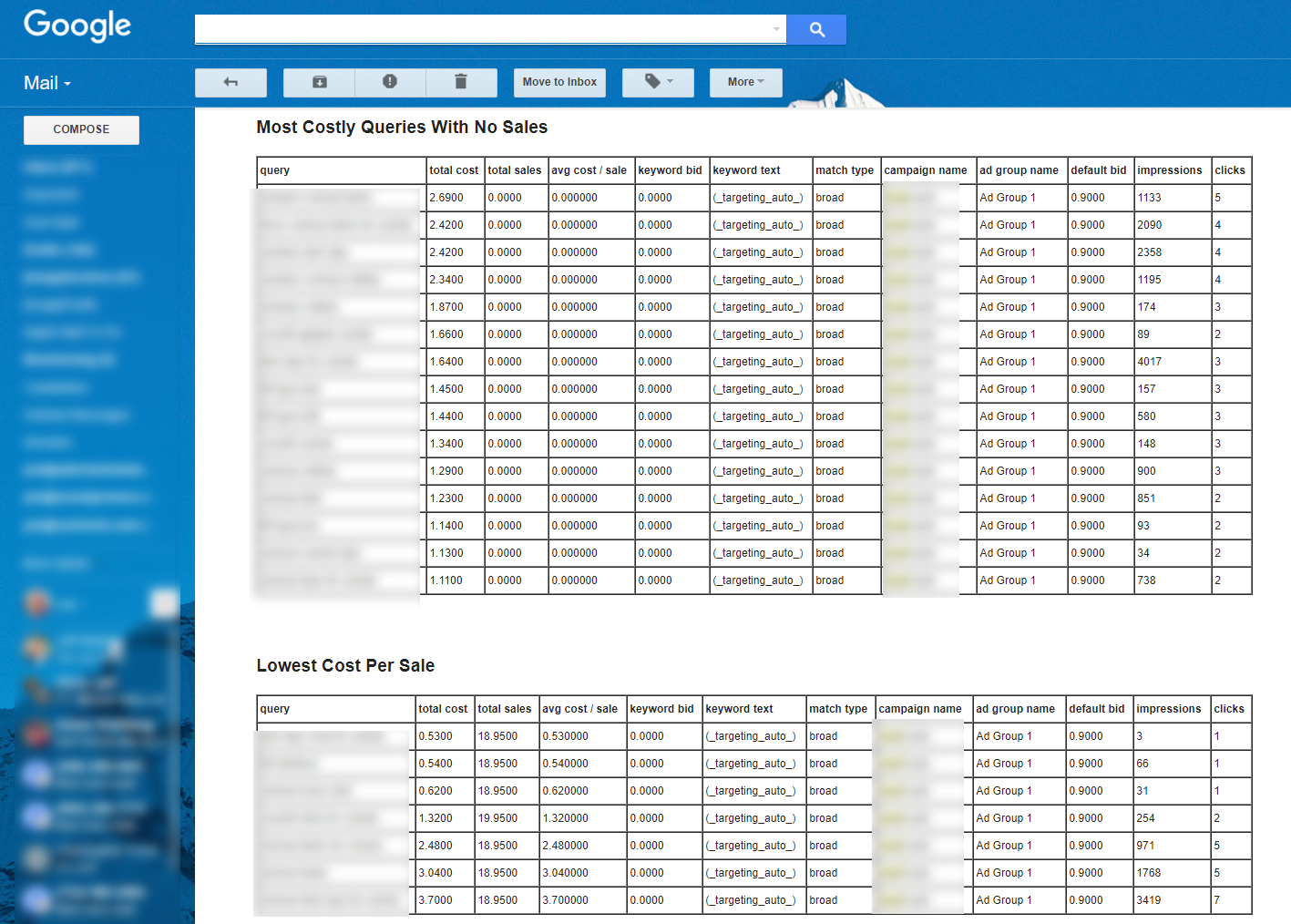
Conclusion
The process really is that easy.
Finding the keywords that cost you the most, make you the most sales or cost the least per sale isn’t really that complex.
You simply need to filter your keyword data and make common sense decisions.
At My Seller Pal we simply want to speed this up for you so you can do it more often (and get many of these insights on auto pilot!).
We have a 14-Day risk free trial at https://www.mysellerpal.com
